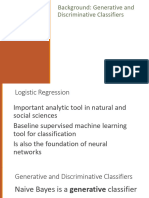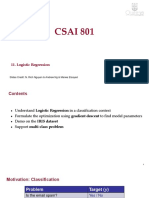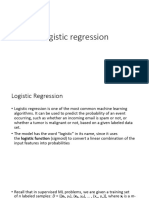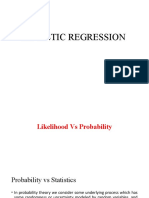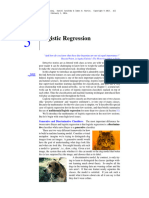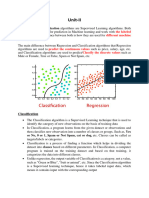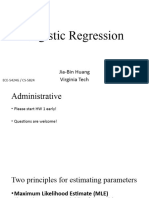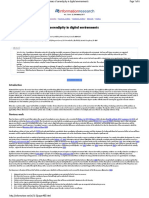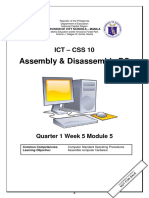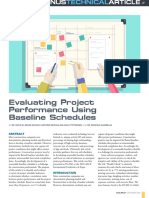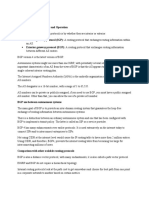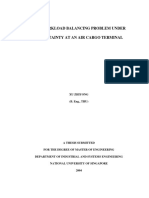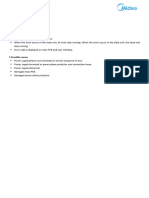0% found this document useful (0 votes)
6 views79 pagesLogistic Regression
The document discusses the differences between generative and discriminative classifiers, highlighting logistic regression as a discriminative classifier that estimates conditional probabilities. It outlines the process of logistic regression, including training with stochastic gradient descent and using cross-entropy loss for optimization. Additionally, it explains the use of the sigmoid function to convert linear combinations of features into probabilities for classification tasks.
Uploaded by
fpar570Copyright
© © All Rights Reserved
We take content rights seriously. If you suspect this is your content, claim it here.
Available Formats
Download as PDF, TXT or read online on Scribd
0% found this document useful (0 votes)
6 views79 pagesLogistic Regression
The document discusses the differences between generative and discriminative classifiers, highlighting logistic regression as a discriminative classifier that estimates conditional probabilities. It outlines the process of logistic regression, including training with stochastic gradient descent and using cross-entropy loss for optimization. Additionally, it explains the use of the sigmoid function to convert linear combinations of features into probabilities for classification tasks.
Uploaded by
fpar570Copyright
© © All Rights Reserved
We take content rights seriously. If you suspect this is your content, claim it here.
Available Formats
Download as PDF, TXT or read online on Scribd
/ 79






